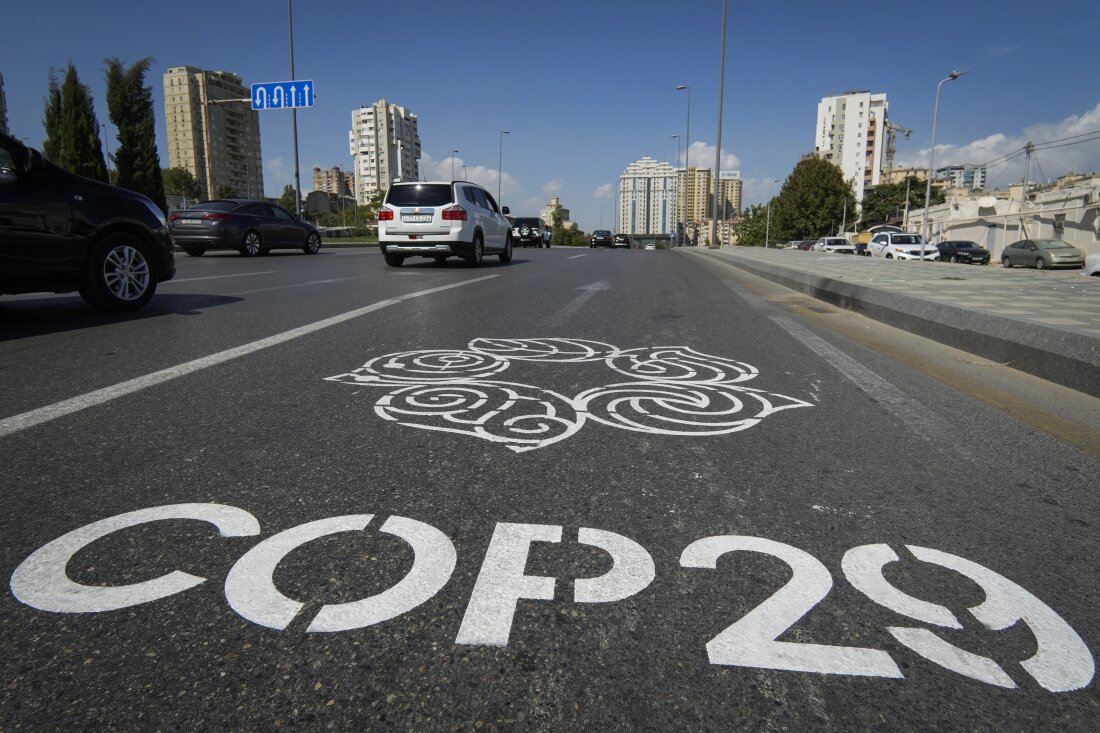
The COP29 climate change conference logo is painted on a road in Baku, Azerbaijan.
Sergey Gretz/AFP/AFP
Hide caption
Toggle caption
Sergey Gretz/AFP/AFP
Global climate talks began today in Baku, Azerbaijan, a major oil and gas producing country that borders Russia and Iran on the Caspian Sea.
The annual meeting is an opportunity for world leaders, as well as scientists, activists and corporate executives, to develop plans to curb global warming and prepare societies to confront the threats they already face from rising temperatures. But the return to the presidency of Donald Trump, the largest historical contributor to planet-warming greenhouse gas pollution, raises questions about whether the country will continue to work on global climate initiatives.
At the conclusion of last year’s conference in Dubai, The negotiators reached a breakthrough agreement For countries to transition away from fossil fuels, the main source of thermal pollution. But Trump promised to boost fossil fuel production in the United States. Even before Trump regained the White House, The United Nations warned Efforts to reduce climate pollution are far from the right track. Global emissions rise to a new record high in 2023, and Scientists in the European Union say It is “almost certain” that 2024 will be the hottest year on record.
Against this background, money will be the focus of the UN climate summit in Azerbaijan, known as COP29. The world needs to spend huge sums to reform entire economies that are still mostly dependent on fossil fuels, and to deal with the risks that countries face due to extreme climate conditions. These needs are particularly urgent in developing countries, which bear little responsibility for global warming but already face huge losses with climate change.
Yet not enough money is being spent — by governments, companies or organizations like the World Bank and the International Monetary Fund — even as climate scientists say the clock to avert the worst threats from global warming is ticking.
“I remain very bullish on the technology side,” says Rich Lesser, global president of Boston Consulting Group. “The challenge is we haven’t set the timeline to do it.”
Here’s what you need to know about the issues and risks in the next two weeks of climate negotiations.
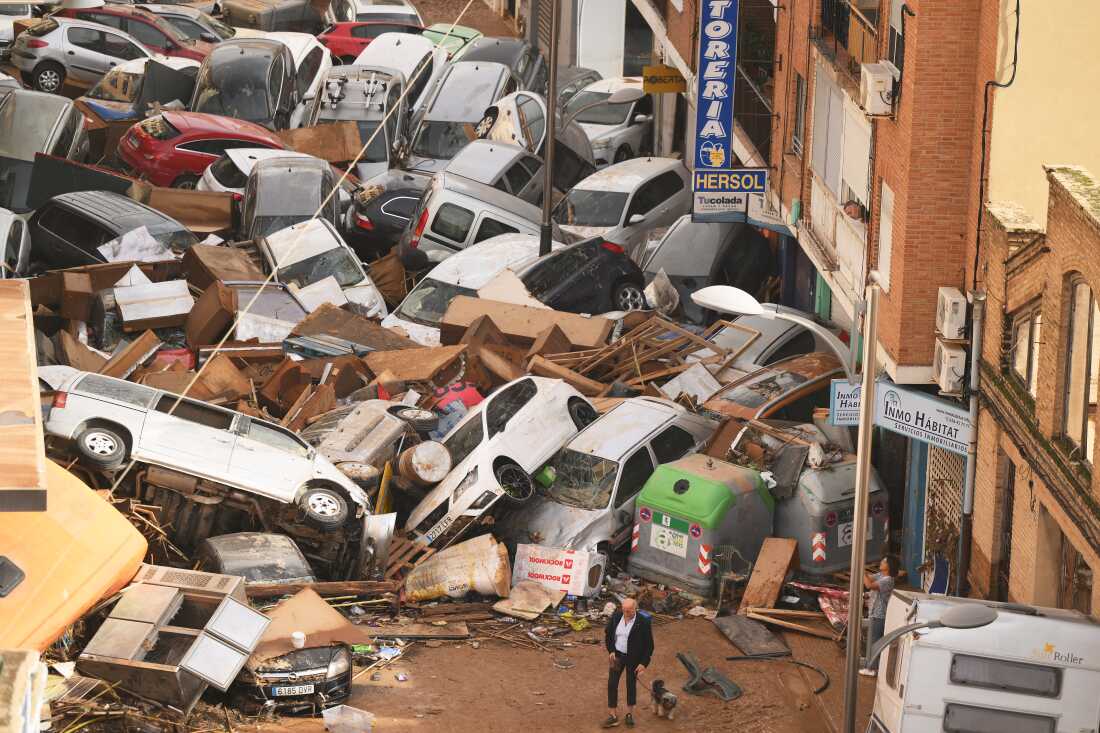
Cars are piled up in the street with other debris in Valencia, Spain, after flash floods in October. Scientists from a group called World Weather Attribution said in a quick analysis that the floods were caused by 12% heavier rainfall and more likely to be doubled by climate change.
David Ramos/Getty Images/Getty Images Europe
Hide caption
Toggle caption
David Ramos/Getty Images/Getty Images Europe
Why is this meeting happening? What is it supposed to achieve?
Nearly 200 countries signed a treaty in 1992 called… United Nations Framework Convention on Climate Change. The agreement aims to prevent human-caused greenhouse gas pollution from interfering with the Earth’s climate. Countries meet every year to discuss how they are doing. The talks are officially called the Conference of the Parties, or COP. Since this is the twenty-ninth Conference of the Parties, it is called COP29.
At the end of the 2015 COP, world leaders signed the historic Paris Climate Agreement.
It requires almost every country to pledge how much pollution it will cause global warming and update those plans every few years. The goal is to limit global warming to well below 2 degrees Celsius compared to temperatures in the late 19th century, and ideally no more than 1.5 degrees Celsius in order to reduce the risk of escalating extreme weather disasters.
Currently, the world is nowhere close to achieving this goal.
How do the US elections affect the talks?
Donald Trump winning is a big deal at this summit. He has called climate change a “hoax.” Trump has also suggested will withdraw the United States from the Paris Agreement, Just as he did in his first term.
“President-elect Trump has made it very clear that he will not wait six months to withdraw from the Paris Agreement as he did in his last term,” says Alden Mayer, senior researcher at climate change think tank E3G. “He’ll quit on the first day.”
If the United States withdraws, the process will take a full year. But the threat is already reshaping the diplomatic landscape. Meyer says that at the Baku summit, countries will not rely on American leadership as they would have done if Vice President Kamala Harris had won the elections.
“With Trump winning, I think people will look to see other countries, other leaders making up the shortfall,” Mayer says. “Especially the European Union and China.”
Countries are scheduled to make new pledges to reduce emissions Early next yearwhich is supposed to be more ambitious than the last one. But first they must come up with a new plan to help developing countries move away from fossil fuels and deal with the effects of global warming. This is high on the agenda this year.
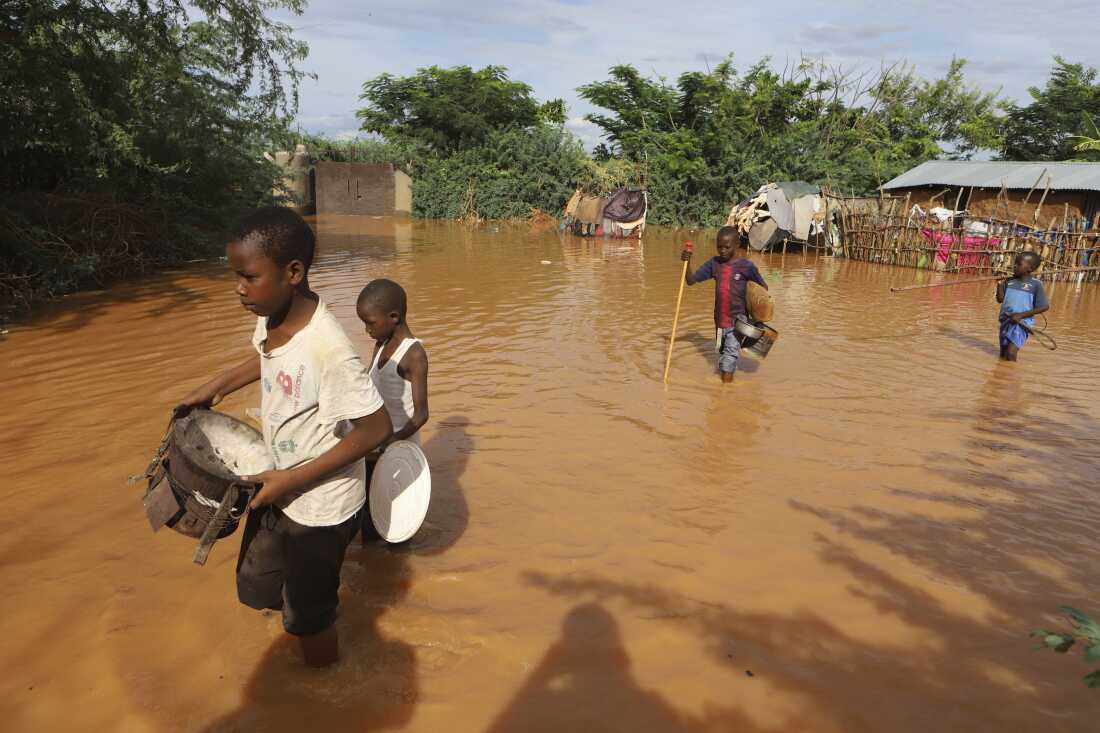
Children flee the floodwaters that wreaked havoc in Kenya in April. The impact of catastrophic rains that hit East Africa from March to May were exacerbated by a combination of climate change and rapid urban growth, an international team of climate scientists said in a study.
Andre Kasoko/AP/AP
Hide caption
Toggle caption
Andre Kasoko/AP/AP
What are the promises made to developing countries?
Industrialized countries like the United States have built their wealth through the production and use of fossil fuels – which is the cause of most of the global warming to date. On the other hand, developing countries contributed much less pollution. But they suffer disproportionate harm due to their smaller economies and geographic locations.
So, in 2009, industrialized countries set a goal of giving developing countries $100 billion a year by 2020 to help them deal with climate change. In 2015, countries extended the pledge until 2025. They also said they would set a new target that reflects “the needs and priorities of developing countries” before the old target expires. This is the new goal that will be negotiated at COP29.
The problem is that rich countries have been slow to provide aid. In 2022, they finally fulfilled their promise, providing aid to developing countries A record $115.9 billion in financing To reduce climate pollution and adapt to rising temperatures.
This leaves developing countries in a dilemma. They need help, but the money pledged certainly will Part of what is needed. They will depend on wealthy, unreliable neighbors.
“I think success for me is when the money is actually delivered,” says Vijaya Ramachandran, director of energy and development at the Breakthrough Institute. “What we really want to see is increased resources allocated to poor countries that will actually enable them to address climate change. Instead, what we are seeing are these statements.”
There is also controversy around it A new “Loss and Damage” fund created last year To compensate vulnerable countries for the damage they are already suffering due to climate change. Although some countries have made pledges, payments have not yet been sent, as countries debate how to manage the fund.
So, what are countries doing to reduce emissions?
While new pledges by countries to further reduce climate pollution will not be due until February 2025, some countries are expected to announce their pledges at the Baku summit.
At last year’s climate talks, participants agreed to – For the first time – The world needs to move away from fossil fuels such as oil, gas and coal
But this year the world Investing more money in fossil fuel exploration and productionThis is according to a report issued by S&P Global Commodity Insights. President-elect Trump has promised to support fossil fuels and reduce investments in solutions that reduce climate pollution, such as solar, wind, and large batteries. Trump said he would “ending” Biden’s signature climate legislation.
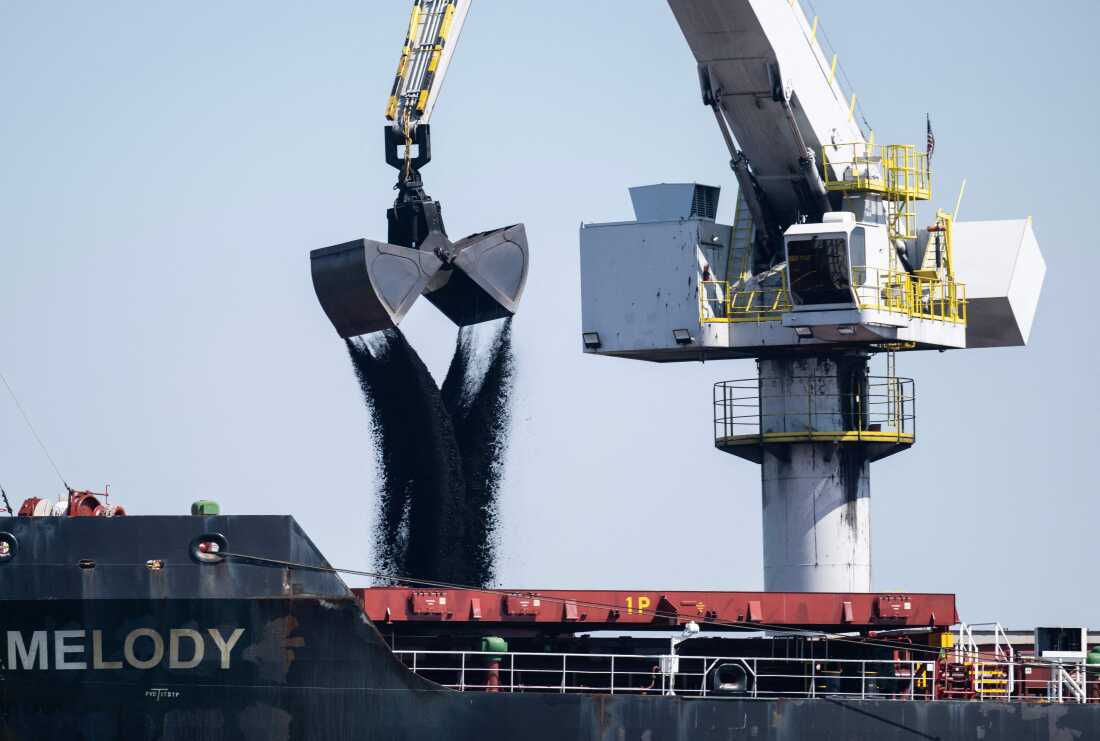
Coal is loaded onto a cargo ship in Louisiana in 2023.
Andrew Caballero-Reynolds/AFP via Getty Images/AFP
Hide caption
Toggle caption
Andrew Caballero-Reynolds/AFP via Getty Images/AFP
How is the world doing on other climate commitments?
At the COP28 meeting in Dubai last year, countries pledged to triple renewable energy capacity by 2030 and double annual energy efficiency improvements. The International Renewable Energy Agency (IRENA) has identified this target as essential to achieving broader climate change goals and avoiding some of the worst consequences of burning fossil fuels.
Countries have agreed to triple the amount of installed renewable energy to 11,000 gigawatts by 2030. But a recently released IRENA report shows that a year after meeting the six-year target, countries are not on track to meet their pledges. It found that current plans will only provide half of the renewable energy pledged in 2030. The only sector on track is solar panels, according to the report. Wind, hydropower, geothermal and marine energy are among those lagging far behind.
“This target is still achievable, but every year the target becomes further away,” says Francesco La Camera, Director-General of the International Renewable Energy Agency. “We made a joint commitment at COP28. Now is the time for us to give it our all.”
Countries will detail these commitments next year when they make their larger pledges to reduce climate pollution.
Last year, countries also agreed to double annual energy efficiency improvements “from about 2% to more than 4% each year until 2030.” But the International Renewable Energy Agency notes that little progress has been made in achieving this goal.
Now Azerbaijan has set a new, ambitious goal for the summit: to increase global energy storage six-fold. Stored energy, often using batteries, can support renewable energy when the sun isn’t shining or the wind isn’t blowing.
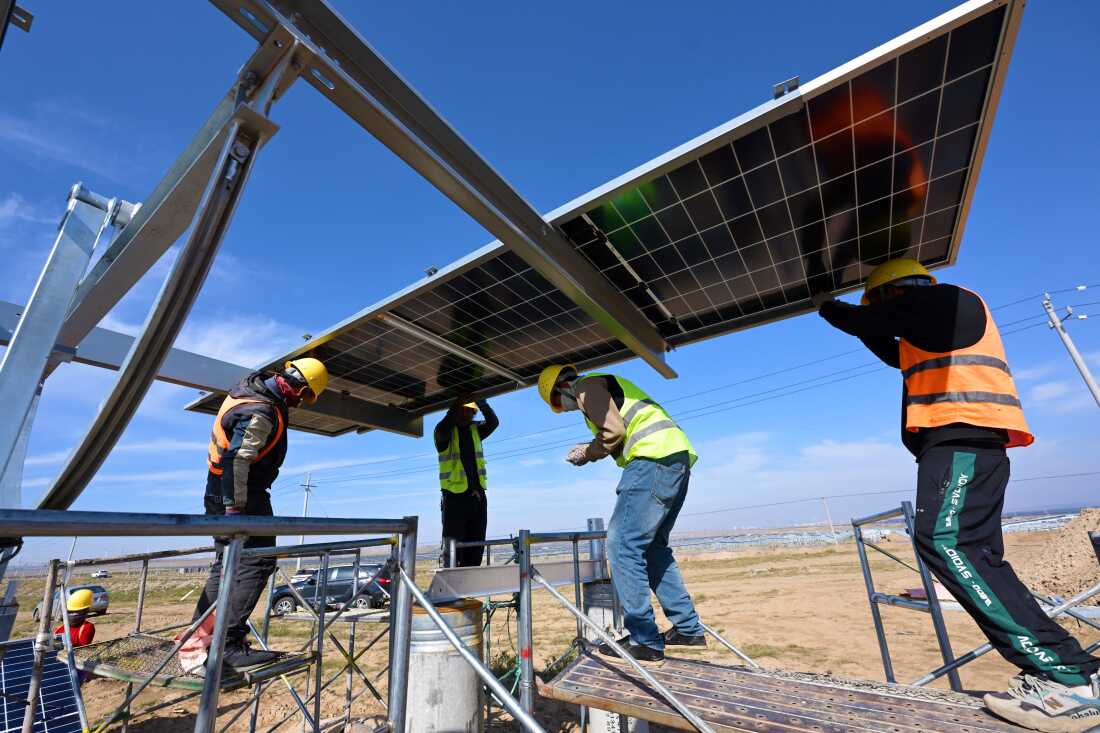
Workers install solar panels in Ningxia, northern China.
-/AFP via Getty Images/AFP
Hide caption
Toggle caption
-/AFP via Getty Images/AFP
What about the voices of indigenous groups?
Aboriginal people have little power in these meetings. They can advise States that are willing to listen to the wishes and needs of indigenous peoples when it comes to negotiated texts and agreements.
Indigenous peoples remain largely marginalized, says Ariel Dieringer, executive director of Indigenous Climate Action and a member of the Athabasca Chipewyan First Nation.
“It was really hard, to be honest,” she said.
Graeme Reed, North American Indigenous representative for the Indigenous Communities and Indigenous Peoples Platform at COP29, says his group will focus on ensuring there is no further harm to Indigenous peoples and on building global solidarity among Indigenous people.
“To free ourselves from the colonial nature of the COP itself,” he said. “The COP is built on the erasure of indigenous nationhood. It is built on upholding state nationalism, and as a result, we will not see significant change until indigenous nationhood is recognized and integrated.



